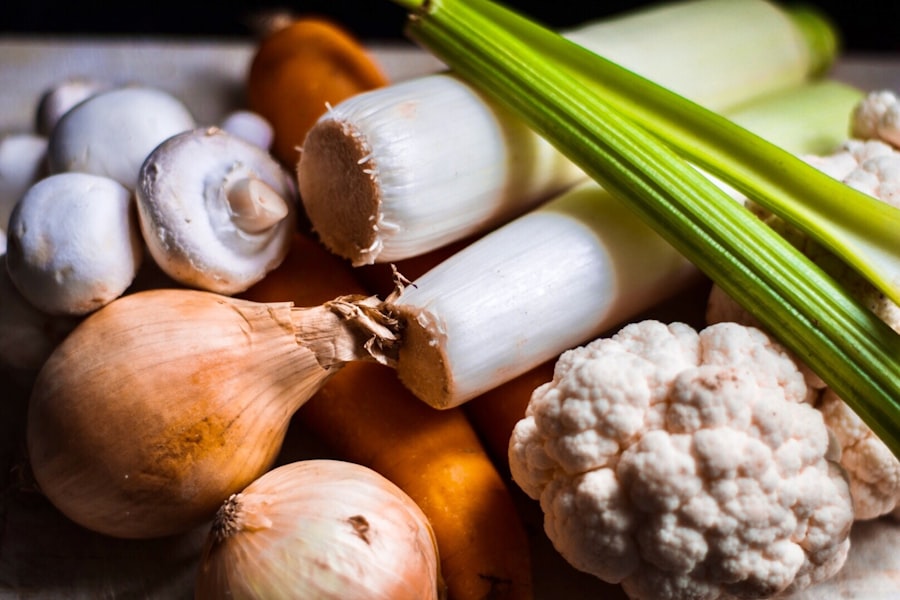A low residue diet is a specialized eating plan designed to minimize the amount of undigested food and fiber in the digestive system. This diet is particularly beneficial for individuals with certain gastrointestinal conditions, including Crohn’s disease, ulcerative colitis, and diverticulitis. The primary objectives of a low residue diet are to reduce the frequency and volume of bowel movements and to decrease the risk of irritation or inflammation in the digestive tract.
Typical foods consumed on a low residue diet include those that are low in fiber and easily digestible. Examples include white bread, pasta, rice, lean meats, and well-cooked vegetables without skins or seeds. These foods are chosen for their ability to be easily broken down and absorbed by the body, minimizing stress on the digestive system.
When following a low residue diet, it is crucial to focus on consuming foods that are gentle on the digestive tract. This approach can help alleviate symptoms such as diarrhea, abdominal pain, and bloating. Maintaining proper hydration is also essential.
Foods that may be difficult to digest, such as raw fruits and vegetables, whole grains, nuts, and seeds, are typically avoided on this diet. By carefully selecting appropriate foods and making informed meal choices, individuals can effectively manage their gastrointestinal symptoms and improve their overall digestive health. It is important to note that a low residue diet should be followed under the guidance of a healthcare professional to ensure nutritional needs are met while addressing specific medical conditions.
Key Takeaways
- A low residue diet is designed to reduce the amount of undigested food and fiber in the digestive system, which can help manage certain medical conditions such as Crohn’s disease, ulcerative colitis, and diverticulitis.
- Breakfast options for a low residue diet can include smoothies, eggs, and refined grain cereals, while avoiding high-fiber foods like whole grains, nuts, and seeds.
- Lunch ideas for a low residue diet can include soups, well-cooked vegetables, and lean proteins, while avoiding raw fruits and vegetables, whole grains, and tough meats.
- Dinner options for a low residue diet can include baked or steamed fish, tender meats, and well-cooked pasta, while avoiding high-fiber foods like beans, lentils, and cruciferous vegetables.
- Snack and dessert recipes for a low residue diet can include smooth nut butters, yogurt, and fruit juices, while avoiding high-fiber snacks like popcorn, nuts, and raw fruits.
Breakfast Recipes for Low Residue Diet
Hearty and Satisfying Options
For those following a low residue diet, breakfast options can still be delicious and satisfying. One great option is a simple egg and cheese omelette made with well-cooked eggs and a small amount of low-fat cheese. Another option is a bowl of creamy oatmeal made with refined oats and topped with a small amount of honey or maple syrup for sweetness.
Lighter Options
For those who prefer a lighter option, a smoothie made with ripe bananas, low-fat yogurt, and a small amount of honey can be a great choice. Additionally, a serving of white toast with a small amount of butter or jam can be a comforting and easy-to-digest breakfast option.
Comforting and Delicious Ideas
Another delicious breakfast idea for those on a low residue diet is a bowl of creamy rice pudding made with white rice, low-fat milk, and a touch of vanilla extract. This warm and comforting dish can be a great way to start the day and provide essential nutrients without irritating the digestive system.
Savory Options
For those who prefer a savory breakfast, a serving of well-cooked grits topped with a small amount of butter or cheese can be a satisfying and easy-to-digest option. By choosing the right ingredients and preparing them in a gentle and easily digestible way, individuals following a low residue diet can still enjoy a variety of delicious breakfast options.
Lunch Ideas for Low Residue Diet

When it comes to lunch options for those on a low residue diet, there are plenty of delicious and satisfying choices to consider. One great option is a simple turkey and cheese sandwich made with white bread and a small amount of low-fat mayonnaise. Another option is a bowl of creamy mashed potatoes made with peeled potatoes and low-fat milk, topped with a small amount of gravy for flavor.
For those who prefer a lighter option, a serving of well-cooked white rice with a small amount of lean protein such as chicken or fish can be a great choice. Another delicious lunch idea for those on a low residue diet is a bowl of homemade chicken noodle soup made with well-cooked noodles, tender pieces of chicken, and a flavorful broth. This comforting and nourishing dish can be easy on the digestive system while still providing essential nutrients.
For those who prefer a vegetarian option, a serving of well-cooked pasta with a simple tomato sauce can be a satisfying and easy-to-digest choice. By choosing gentle and easily digestible ingredients, individuals following a low residue diet can still enjoy a variety of delicious lunch options.
Dinner Options for Low Residue Diet
| Meal Option | Description | Benefits |
|---|---|---|
| Grilled Chicken Breast | Lean protein source that is easy to digest | Provides essential amino acids without irritating the digestive system |
| Steamed White Rice | Simple carbohydrate that is gentle on the stomach | Easy to digest and provides energy without causing discomfort |
| Boiled Carrots | Soft vegetable that is low in fiber | Provides essential nutrients without adding bulk to the stool |
| Baked Fish Fillet | Light and easily digestible protein option | Rich in omega-3 fatty acids and gentle on the digestive system |
For those following a low residue diet, dinner options can still be flavorful and satisfying. One great option is a serving of well-cooked white fish such as tilapia or cod, paired with a side of creamy mashed sweet potatoes made with peeled sweet potatoes and low-fat milk. Another option is a serving of well-cooked pasta with a simple butter and herb sauce for added flavor.
For those who prefer a heartier option, a serving of well-cooked beef stew made with tender pieces of beef and soft vegetables can be a comforting and nourishing choice. Another delicious dinner idea for those on a low residue diet is a serving of well-cooked quinoa paired with steamed vegetables such as carrots, zucchini, and bell peppers. This light and nutritious dish can be easy on the digestive system while still providing essential nutrients.
For those who prefer a vegetarian option, a serving of well-cooked lentils paired with steamed rice can be a satisfying and easy-to-digest choice. By choosing gentle and easily digestible ingredients, individuals following a low residue diet can still enjoy a variety of delicious dinner options.
Snack and Dessert Recipes for Low Residue Diet
When it comes to snacks and desserts for those on a low residue diet, there are plenty of delicious options to consider. One great snack idea is a serving of smooth peanut butter spread on white bread or crackers for added crunch. Another option is a small serving of vanilla pudding made with low-fat milk for added creaminess.
For those who prefer something sweet, a small piece of angel food cake or pound cake can be a satisfying and easy-to-digest dessert option. Another delicious snack idea for those on a low residue diet is a serving of smooth yogurt topped with ripe bananas or canned peaches for added sweetness. This light and refreshing snack can be easy on the digestive system while still providing essential nutrients.
For those who prefer something savory, a small serving of popcorn made with minimal butter or seasoning can be a satisfying and easy-to-digest snack option. By choosing gentle and easily digestible ingredients, individuals following a low residue diet can still enjoy a variety of delicious snack and dessert options.
Tips for Cooking and Meal Planning on a Low Residue Diet

Focus on Gentle Foods
First, it’s important to focus on consuming foods that are low in fiber, such as white bread, pasta, rice, lean meats, and well-cooked vegetables without skins or seeds. It’s also important to avoid foods that may be difficult to digest, such as raw fruits and vegetables, whole grains, nuts, and seeds.
Cooking and Hydration Tips
Additionally, it’s important to stay well-hydrated by drinking plenty of water throughout the day. Another important tip for cooking and meal planning on a low residue diet is to focus on gentle cooking methods such as boiling, steaming, or stewing to ensure that foods are easily digestible. It’s also important to avoid using excessive amounts of fat or seasoning that may irritate the digestive system.
Eating Habits for Optimal Digestion
Additionally, it’s important to eat smaller, more frequent meals throughout the day to help manage symptoms such as diarrhea or bloating. By following these tips and making thoughtful meal choices, individuals can effectively manage their symptoms and improve their overall digestive health while following a low residue diet.
Conclusion and Additional Resources for Low Residue Diet Recipes
In conclusion, following a low residue diet can be beneficial for individuals who have certain medical conditions such as Crohn’s disease, ulcerative colitis, diverticulitis, or other gastrointestinal disorders. By carefully selecting the right foods and making thoughtful meal choices, individuals can effectively manage their symptoms and improve their overall digestive health. With delicious recipes for breakfast, lunch, dinner, snacks, and desserts that are gentle on the digestive system, individuals following a low residue diet can still enjoy a variety of flavorful and satisfying meals.
For additional resources and recipe ideas for those following a low residue diet, there are plenty of cookbooks and online resources available that provide helpful tips and delicious recipes tailored to this specific dietary need. These resources can offer valuable guidance on meal planning, ingredient selection, cooking methods, and more to help individuals successfully navigate the challenges of following a low residue diet while still enjoying delicious meals. By utilizing these resources and experimenting with different recipes and meal ideas, individuals can find creative ways to make their low residue diet both nutritious and enjoyable.
If you’re looking for low residue diet recipes, you may also be interested in learning about the benefits of a low residue diet. Check out this article on theaikostore.com to discover how a low residue diet can help manage digestive issues and improve overall gut health.
FAQs
What is a low residue diet?
A low residue diet is a type of diet that limits the amount of fiber and other indigestible materials in the digestive tract. It is often prescribed for individuals with certain medical conditions such as Crohn’s disease, ulcerative colitis, or after certain types of surgery.
What are the benefits of a low residue diet?
A low residue diet can help reduce the frequency and volume of bowel movements, decrease the risk of intestinal blockages, and alleviate symptoms such as diarrhea, abdominal pain, and bloating.
What foods are typically included in a low residue diet?
Foods that are low in fiber and easy to digest are typically included in a low residue diet. This may include well-cooked fruits and vegetables without skins or seeds, refined grains, lean proteins, and dairy products.
What are some examples of low residue diet recipes?
Some examples of low residue diet recipes include mashed potatoes, smooth nut butters, cooked and peeled fruits, white rice, tender meats, and dairy-based desserts.
Are there any restrictions on seasonings or condiments in a low residue diet?
Individuals following a low residue diet may need to limit or avoid certain seasonings and condiments that can be irritating to the digestive tract, such as spicy or heavily seasoned foods. It is important to consult with a healthcare professional for specific dietary guidelines.









